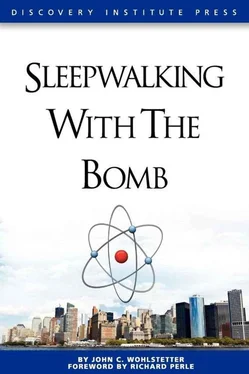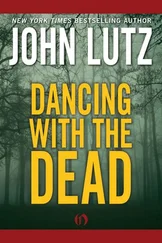So while national security specialists continue to worry about growing nuclear threats, our citizenry is preoccupied with global economic crises. Though generally aware of present threats, many lack the grounding offered by the more than half century of tutelage that preceded 9/11. To them the prospect of an actual nuclear detonation must seem remote. It is a comforting, but perilous, assumption. Only history’s lessons can supply what living memory cannot.
Nuclear strategy was once an avocation for what often was termed—rarely as a compliment—a “priesthood” of strategists, scholars, defense and foreign policy intellectuals, government officials, and a small coterie of interested onlookers from the outside. Much relevant knowledge was of necessity highly classified (some still is, most notably the precise formula for making an efficient, and hence readily deliverable, hydrogen bomb). Most discussions of what might or might not happen—even what could and could not happen—centered upon speculation. The great nuclear strategists of a half century ago exercised their keen imaginations, with only sparse data to answer central questions, among them how governments and individual leaders could acquire and use nuclear technology, and how nuclear war could best be avoided.
There was little historical guidance. America’s Founding Fathers, by contrast, drew lessons extracted by painstaking study of historical examples dating back to ancient Greece, traced through imperial Rome, medieval England, and more. Over 2,000 years of history were encompassed in such narratives.
Now, after two-thirds of a century, global nuclear history offers multiple clear examples that teach lessons on how to minimize the risk of nuclear catastrophe in the present and future. Yesterday’s history gives us concrete evidence of what has worked and what has failed. Now there are enough examples to illustrate—for the public and policy makers alike—how to most effectively address the nuclear issues we face. This book applies lessons of nuclear-age history to chart a less utopian, more prudent path.
Support for nuclear disarmament—so-called nuclear zero—flies in the face of history’s lessons. Proponents of nuclear zero hold that the possibility of nuclear annihilation creates among all nations a common interest in mutual survival. They also hold that a world without nuclear weapons can be achieved by means of diplomacy. According to their view, the use of a single nuclear weapon will inevitably lead to an all-out nuclear war—that is, to mutual assured destruction; disarmament is therefore necessary to save the human race.
Public policy prescription has always been, in the main, guesswork, but there are better and worse guesses. Guesses that rely on the belief that all countries and all leaders share our core civilizational values are likely to be wrong. The strategists, with their numbers and calculations, can err with catastrophic consequences—but equally so can those who slight sound strategic principles or disdain numbers and calculations, because they pursue disarmament as an end in itself in spite of what history has to teach.
The first two chapters of the book offer some background. Chapter 1explains why policies driving America’s arsenal towards nuclear zero would, far from making America, its allies, or the world safer, bring everyone closer to nuclear catastrophe. This is especially crucial to realize as the United States elects a president in 2012; the winner likely will face decisions of greater moment than any since at least the 1962 Cuban Missile Crisis.
Chapter 2reviews nuclear-age history, highlighting key events from the three eras of nuclear arms evolution: 1945 to 1967, which saw an all-out arms race; 1968 to 1992, which was dominated by superpower efforts to restrain arms competition; and 1993 to the present, which has featured growing nuclear proliferation by hostile states.
Each of the next eleven chapters offers a narrative of key faces, places, and cases with an eye towards the vital lessons nuclear-age history now offers—lessons that are being ignored at grave peril to world political, economic, and social stability.
Chapter 3looks at the former Soviet Union and today’s Russia to examine the relationship—in strategic parlance the question of “linkage”—between the nuclear arms policies and foreign policies of nuclear nations. It offers the FIRST LESSON: ARMS CONTROL CANNOT BE VIEWED IN ISOLATION, BUT RATHER MUST BE CONSIDERED ALONG WITH AN ADVERSARY’S CONDUCT.
Chapter 4examines the problem of trying to negotiate arms agreements with adversaries. The experience of the United States over several decades teaches the SECOND LESSON: ARMS AGREEMENTS MUST BE BASED UPON GENUINE, NOT PRESUMED, COMMONALITY OF STRATEGIC INTEREST.
Chapter 5examines the risk of a future global nuclear confrontation with Iran in light of new information about the 1962 Cuban Missile Crisis. That event, properly understood, teaches the THIRD LESSON: REVOLUTIONARY POWERS CANNOT BE CONTAINED; THEY MUST BE DEFEATED.
Chapter 6looks at North Korea to consider the risk of a rogue nuclear state blackmailing adversaries with the threat of a sudden resort to nuclear weapons. It offers the FOURTH LESSON: NUCLEAR WEAPONS GIVE NATIONS A “DYING STING” CAPABILITY THAT VIRTUALLY PRECLUDES PREEMPTIVE ACTION AND CONFERS NEAR-TOTAL SURVIVAL INSURANCE.
Chapter 7looks at China and Chinese history to consider the risk of a regional power confrontation escalating to nuclear war. The Chinese experience teaches the FIFTH LESSON: THE NUCLEAR BALANCE MATTERS IF ANY PARTY TO A CONFLICT THINKS IT MATTERS, AND THUS ALTERS ITS BEHAVIOR.
An “interlude” between chapters 7 and 8 examines how thin is the line between development of commercial nuclear power and the development of weapons. The discussion there serves as an important background to subsequent chapters.
Chapter 8looks at India and Pakistan to examine the risk of regional nuclear war. It also examines the risk posed by theft of nuclear weapons or an Islamist takeover of the country. These countries’ experiences teach the SIXTH LESSON: CIVILIAN NUCLEAR POWER INHERENTLY CONFERS MILITARY NUCLEAR CAPABILITY.
Chapter 9examines the problem of obtaining accurate intelligence on a country’s nuclear power program, looking specifically at Western experiences with Iraq and Iran. It offers the SEVENTH LESSON: INTELLIGENCE CANNOT RELIABLY PREDICT WHEN CLOSED SOCIETIES GO NUCLEAR.
Chapter 10examines why nations go nuclear and considers Russia, Britain, France, and Israel in turn. It offers the EIGHTH LESSON: ALLY PROLIFERATION CAN BE PREVENTED ONLY BY SUPERPOWER CONSTANCY.
Chapter 11looks at the implications of popular pressure to disarm, such as arose after the bombings of Hiroshima and Nagasaki, as well as pressure to ban atmospheric tests. It offers the NINTH LESSON: POPULAR PRESSURE FOR UNILATERAL DISARMAMENT CAN PREVAIL UNLESS WESTERN GOVERNMENTS EXPLAIN ITS HIDDEN, GRAVE DANGERS.
Chapter 12also looks at disarmament, though from a different angle: it explores why nations disarm (the examples are South Africa, Libya, Argentina, Brazil, and three former Russian republics) or are disarmed by force (Iraq and Syria). These examples teach the TENTH LESSON: DISARMING HOSTILE POWERS CANNOT BE DONE BY NEGOTIATIONS ALONE.
Chapter 13examines the special catastrophic threat posed by surprise “electromagnetic pulse” attacks, now within reach of smaller, emerging nuclear powers such as nuclear-club-aspirant Iran. It offers the ELEVENTH LESSON: NEVER ALLOW SINGLE OR LOW-NUMBER POINTS OF CATASTROPHIC VULNERABILITY.
Читать дальше












